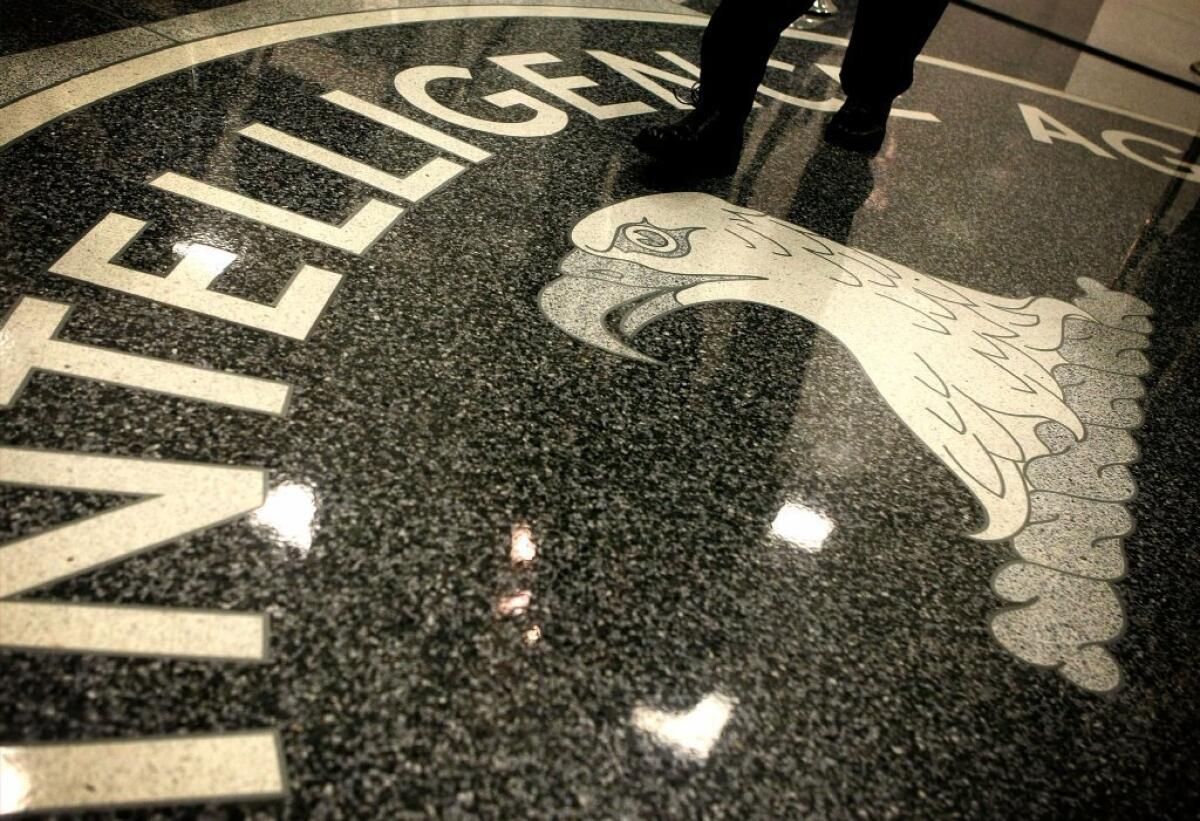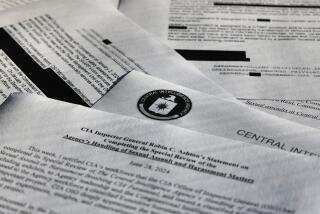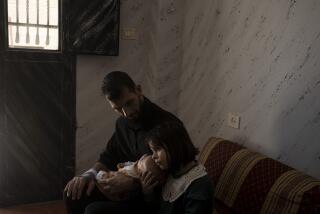At CIA’s ‘Salt Pit’ prison, torture reigned with little oversight

Reporting from Washington — The first detainee interrogated in the old abandoned brick factory north of Kabul became the model for what would later unfold in the cave-like halls of a CIA interrogation facility known as the “Salt Pit.”
Ridha Najjar, a suspected former bodyguard for Osama bin Laden, often was left alone in the shadows under a barrage of shrieking music, cold, shackled and hooded, his dark figure handcuffed to an overhead bar for 22 hours a day, according to a report released Tuesday by the Senate Intelligence Committee.
Later, another detainee, Gul Rahman, believed to have served in a security detail for an Afghan warlord, would die in the Salt Pit.
He was dragged though the dirt and grime of the corridors, his mouth taped, his clothes falling off. His captors slammed and punched him, and left him chained to a concrete floor in a sweatshirt but no pants. Officials labeled the death hypothermia, though his face, legs, shoulders and waist were cut and bruised.
A few months later in March 2003, with the outside world still unaware of the secret facility, a lead CIA officer who ordered Rahman to be shackled naked in his cell was presented a $2,500 “cash award” for his “consistently superior work,” the report states.
For two years, about 64 detainees filled the darkened hallways and small side rooms of the factory. The CIA began using the facility in September 2002, a year after the Sept. 11 terrorist attacks on the United States.
There, the Senate report concludes, a culture of brutal interrogation tactics and torture reigned, often led by untrained and unsupervised officers using methods that CIA leaders did not know about.
The Salt Pit, one supervisor is quoted in the report as saying, was “good for interrogations because it is the closest thing … to a dungeon.”
Republicans and officials from the George W. Bush administration strongly defend the “enhanced interrogation techniques” used at the Salt Pit and other facilities as having been necessary to prevent another terrorist attack. Accounts of torture have emerged from similar CIA-designated “black sites” abroad.
But the Salt Pit in Afghanistan stood out, the Senate report concludes, as the domain of rogue officers, many woefully unprepared for their assignments. They roamed the factory largely unchecked, with CIA headquarters officials either unconcerned or unwilling to peek behind the blacked-out windows.
The agency placed a junior officer “with no relevant experience in charge of Cobalt,” the report says, using the committee’s code name for the Salt Pit.
Even some interrogators at Salt Pit complained about what was occurring there, saying that their techniques were unsafe or ineffective. One complaint urged CIA leaders to revoke the classified clearance of an officer “due to a lack of honesty, judgment and maturity.”
Some senior leaders in the factory did not have the linguistic or analytical experience “to conduct effective questioning of CIA detainees.” The result was “diminished intelligence” gathering, the report says. Almost no records were kept of the detainees or the progress of interrogations in the first year.
Guards and interrogators tiptoed through the darkness, carrying headlamps to count detainees packed into two dozen cells. Their lights illuminated prisoners hanging from overhead bars, next to buckets on the floor to catch their waste. One hung there for 17 days.
Another detainee “looked like a dog that had been kenneled,” wrote an interrogator. “When the doors to their cells were opened, they cowered,” according to CIA documents quoted in the report.
Indeed, reports of sleep and sensory deprivation; of nudity and unhealthful, unsanitary food; of cold showers and ice buckets; and of rough takedowns and mock executions never were reported to supervisors.
Everything seemed shrouded, everything secret. Documentation was sketchy, meaning a full account of what happened at the Salt Pit may never be known.
According to official reports, no waterboarding took place. But the study refers to a CIA photograph depicting a “waterboard device” surrounded by buckets, with a bottle of unknown pink solution nearby, two-thirds full, and a watering can resting on wooden beams.
Few in the CIA leadership seemed to know much about the Salt Pit or what happened there. Then-CIA Director George Tenet told investigators from the inspector general’s office he was “not very familiar” with the Salt Pit or what the agency “is doing with medium-value targets.”
CIA General Counsel Scott Muller erroneously thought it was just a holding facility and said he had “no idea who is responsible” there, according to the report. Jose Rodriguez, head of the CIA’s Counterterrorism Center, was focused on “other higher priorities.”
That left the guards and the interrogators to run the place. Just a month after it was opened, they let in an inspection team from the federal Bureau of Prisons. The inspectors quickly gave their blessing, noting that they were “WOW’ed” by the factory “because there is nothing like this” in the bureau’s prison system in the U.S.
Najjar, who was captured in Pakistan, was designated a high-priority prisoner. There was no evidence he resisted, yet hoods, restraints and round-the-clock interrogations were approved for him. He was forbidden toilet privileges and instead given a diaper. Threats were made that his family would be killed, the report states.
CIA officers saw a “reasonable chance of breaking Najjar” to learn more about Bin Laden. According to the CIA, he “became the model” for future interrogations.
Within a month, Najjar was a “clearly a broken man … on the verge of complete breakdown,” according to CIA documents quoted in the report. Whether he ever cooperated is unclear. He reportedly is now held at the U.S. airfield at Bagram, Afghanistan. He would be in his late 40s.
Despite its stated interest in Najjar, the CIA in the end sent only one intelligence report discussing his incarceration and interrogations.
Rahman, who died two months after the Salt Pit opened, was described in CIA documents as an “Islamic extremist.” The initial cable to Washington regarding Rahman’s death “included a number of misstatements and omissions” by Salt Pit officials, the report states.
On the last night of his life, Rahman was dragged down the corridors by five CIA officers, who shackled him to the wall and floor.
“He had been judged to be uncooperative during an earlier interrogation,” the report states. At dawn, his broken corpse was no longer of any use to U.S. officials hoping to gather intelligence.
More to Read
Sign up for Essential California
The most important California stories and recommendations in your inbox every morning.
You may occasionally receive promotional content from the Los Angeles Times.











